232. From Cold Turkey to Lame Duck? And, an historical essay from 1986 on Louisville, Lexington, and more Louisville.
Yesterday afternoon I had the chance to have dinner with a friend and his boss, two of Louisville's civic leaders, one a reliably liberal Democrat, the other a reliably conservative Republican. Over our meal at Louisville's tres chic Proof restaurant at 7th and Main, we discussed both the future and the past of Louisville, as well as a number of other politically interesting topics, although we didn't discuss the 8664 project, the topic du jour, which was to have its own presentation just a few hours later in the Kentucky Center for the Arts, two blocks to the east.
At some point, the discussion turned to the comments of Hal Heiner from a day earlier. In both print and audio, Heiner, a Republican member of the Metro Council, said the "administration was sending mixed signals" with regard to Louisville's current budget situation. He cited language from the Mayor just over three weeks ago where the City-County's Chief Magistrate said our budget projections were solid compared with that of two days ago, where His Honor the Mayor of Louisville-Jefferson County Metro declared a hiring freeze in response to a projected shortfall in revenues of $9,600,000.00. Note, he isn't projecting a deficit, just $9,600,000.00 less than we expected in revenues.
Our conversation centered at that point on the recent failure of the Library Tax referendum, a tax I supported, as well as the request by the Mayor of Forty-Something Million Dollars worth of bonding for the Museum Plaza project, the 61 story edifice going up 1/2 block north of where we were enjoying our meal, and owned by the same folks who owned the restaurant. All of these happenings could not bode well for the Mayor, elected to his second term in 2006 (with the possibility of a third in 2010) and here and there the words "lame duck" were spoken, although there was no concensus on the matter.
From that point, we entered a discussion on the role of the newspaper, specifically our Once Great Newspaper, the Courier-Journal, as a sort of hall-monitor for the community. My Republican friend suggested that I saw the newspaper as a "noble warrior" questioning polticians and others in a valiant quest to serve the greater good of the community, while he saw them as the corporate body they were, whose one and ultimate goal was to be financially successful, irrespective of whatever community role they might play, or pretend to play. I conceded he was correct on both counts. They are the corporate giant out to make money and I think they should be a medium devoted to exposing the abuses and hypocricies of modern-day politicians, business venturists, and others. I believe the newspaper, here or anywhere else, should play the role of Dr. Thomas Stockmann, Ibsen's character in the play "An Enemy of the People," the good doctor pointing out the ills that may be harming the good folk of the city. All too often our political and business leaders play the role of his antagonist in the play, his brother Peter Stockmann, the mayor of the city around which the play is built. I think of the newspapers and other media as the unstated fourth branch of government, the proverbial Fourth Estate, as Edmund Burke, a American sympathiser in the British House of Commons, called them from his seat in the Parliament back in 1790 or so.
I pointed out that the current role of the Courier-Journal seemed to be one which rarely criticised any effort of the current Mayor, a man who previously served three terms as Mayor of the old City of Louisville, the one municipality which was wiped away by the Merger vote in November, 2000. I also pointed out the the current Mayor's first term in his former role began in January 1986, a date which conveniently coincided with the demise of the Bingham family empire which once owned Louisville's Once Great Newspaper, the Courier-Journal. Which brings me to today's entry.
I have in my possession a manuscript I wrote sometime in 1986. It is a promulgation of sorts of my beliefs on the then-current happenings and history of Louisville as I saw it at the time. It is also a strongly conspiratorial piece. If there had been blogs in those days, which presupposes a World Wide Web, this would have been an entry. It is undated, but from the comments therein, it was most likely written sometime between January 9 and January 27, 1986 and at the latest March 31, 1986. As it is my work, I assure it is Reprinted With Permission.
*****
I knew something like this was eventually going to happen. It was fourteen or fifteen years ago [Ed. Note: 1971 or 1972]. Louisville was still using the Census figures from 1960 indicating the population within the City Limits at 390,000 and some odd. Everyone knew there was no way that Lexington could catch us. We were on top of the world. The depression that was beginning to sink in to the rest of the countyr hadn't yet taken its effect on Louisville. The parking lot was still full at General Electric. Harvester was working strongly. Ford was doing well at Fern Valley, and if I remember right the Westport plant on Westport Road was either being built or had just opened. I'm a little foggy there. But in general things were fine. Things were good for fans of the University of Kentucky. The 50,000 watts clear-channel voice of Kentucky, WHAS 840, was strong, as were the close sentiments between the school and the station. Adolph was close to retirement and everyone knew that someone within the program would take over. It was a matter of whose ego would win out, that of the Athletic Director or the Coach. But the fans knew that whoever it was, as long as it was someone from within, it would be okay. Kentucky [fans] weren't even worried about who the Cardinals were, on what station, or against whom they were playing. A lot of them did know who was being mentioned as the new coach because of his association with the only basketball power that could be compared with UK, the Blue and Gold Bruins of UCLA. Who would have thought that the first piece of the puzzle was about to be put in place. There were the stories of the new government beginning to take shape in Lexington where something called an Urban County Government was going into effect. But that didn't worry us either. This city had gone through a round of annexations in the Sixties and were finished with that. All in all things were well. But then there is the matter of that first piece of the puzzle.
The University of Louisville was a municipally controlled school then, a small school in need of money. Their enrollment I believe was still around 10,000. They were in the Missouri Valley Conference and played schools such as Drake, North Texas State, Saint Louis University and, still, to an extent, Bellarmine, the other small college in town. Bellarmine itself had just gone through a change recently, having merged with Ursuline College and then adjusting the name. But Bellarmine was not having the grave financial problems that U of L was, as besides it was private. Then it happened. The University of Louisville would be absorbed into the state system of higher education, coming on as an equal with the state's main "State" school, the University of Kentucky, home of the fighting Wildcats, in Lexington, that other city up beyond Frankfort. Who would have known this was the beginning of the end?
As I said, that was the beginning. The next indication was probably the most trying and terrifying time that the county had ever seen. [Writer's note: Most people would have said " . . . that the city and county had . . . " I didn't because it was parts of the whole county which include the city]. [Ed. Note: The previous bracketed "writer's note" was part of the original manuscript, not a current emendation.] This horrible season began officially on September 4, 1975.
Federal Court-Ordered bussing for Desegragation purposes began on Thursday, September 4, 1975. There were fights, burnings, threats, destruction of public and private property, and psychological scars left by this most bizarre of times incident. The community knew it didn't want to be forced to do anything, and even more so if it meant sending our kids to another neighborhood to attend school with people we didn't know. It had never had an opportunity to say so at the polls, but everyone just knew it. That was another part of the puzzle. A co-mingling of the neighborhoods' kin and enemies. It came at a time when one of the community leaders was stressing the importance of neighborhoods and their individual identities. It would become the Hallmark of his political life. And yet at the same time he was trying to stress neighborhoods bonding together, the Federal government was saying we should all become one. It just didn't all seem to be a part of a Master Plan. But it was. Just remember how easy life had been only six months earlier when the easy scheduled separation of Louisville and Lexington, ongoing for many years, was almost interrupted by a free throw shot of Terry Howard's? Remember that name? While some don't, he is the man who saw to it that John Wooden would end his illustrious career with a win over the Wildcats as opposed to his pupil's school, the University of Louisville. Now you see, this is all related, believe me. It was beginning to be time for another piece of the puzzle to drop. The gods in charge knew that some folks were beginning to catch on. They used a particularly ominous occasion to mark the passing of an era. The new gym in Lexington had been named for him. They even provided a nice big chair for the man in the Brown coat to sit in to watch the games. But it came anyway. On December 10, 1977, the Wildcats were playing Kansas at Kansas. The Cats won and shortly after the game, Cawood announced over those 50,000 watts to Blue fans across the nation that, indeed, it was a blue night. The Coach, Adolph Rupp, has passed away on a night his beloved Cats were playing his Alma Mater, Kansas. This was another piece.
They saw Kentucky fans begin to notice the attention Louisville was getting. They even bagan to see more Louisvillians begin to cheer for Louisville instead of Kentucky. And this was particularly disheartening for Kentucky fans who lived in Louisville. We always knew there were some Louisville fans in Louisville. We even knew there were some Notre Dame fans in Louisville. (We even knew that of lot of them were our very selves). But we knew mostly that Louisville was full of Kentucky fans, so many that were didn't worry about losing that distinction to anybody, even Lexingtonians, who were beginning to grow in numbers. That government down there seemed to be working. But things for the most part were good. We were in a good year for basketball. Dr. Singletary seemed to be a good President for the University as did Governor Carroll seem to be a good governor for the University. And this year, because people were beginning ti be a little worried, the gods-in-charge gave us a present. We would be the NCAA basketball champions. The Blue and While would wave proudly not only in the Bluegrass region but throughout the state. And Louisville fans would have a reassuring moment to still say that they were alive and well in Louisville. The Courier-Journal did a beautiful color pull-out piece and who can ever forget the team? Rick Robey, Mike Phillips, Goose Givens, Truman Claytor, James Lee, Coach Joe B. Hall, and the rest. It was good times at its best.
I recall fondly driving to BlueGrass Filed in my grandmother's 1967 Chevrolet Station Wagon. The whole town was packed and pandemonium was the main course. That fall I would begin studying at the University of Kentucky and making one the biggest mistakes of my life: dropping out of school. Anyway, that is another story. Back to 1978. It was about that time, as I said, that talk started up again about combining the governments. I believe it was leftover talk from the waning days of Judge Todd Hollenbach's career that people started looking at the form of government in place in Orange County, California. It was a sort of urban county government with the county being the seat of municipal government as opposed to the city, as in Lexington-Fayette. It was also about this time that people began to look at the fine team that Coach Denny Crum was beginning to put together at the Univeristy of Louisville. And I suppose it was about this time that "those in charge" decided to begin to fulfill their program. It is a program that divided even further Louisville and Lexington. It is a program that somehow has the backing of the powers-that-be in Frankfort because it allows for the expansion of a full-fledged city of Lexington. One need only look at the growth and development in Lexington, with particular reference to residential development on the southeast side of town. This being along the new Alumni Drive, the Tates Creek Pike and outside of New Circle Road. During this time also, there has been a great deal of development in downtown Lexingotn, both in residential and commercial properties. Along about this same time, people like the late Mr. Prichard and their committees on education began to explore the idea of a combined state university, although serious discussions of this type would not take effect for another two or three years. First, it had to be established that the University of Louisville was indeed a power to be reckoned with, standing as an academic giant in the state's "Last Hurrah" indistrial city, Louisville. This was to be done soon.
It was in 1980.The University of Louisville would travel not very far from home, in another city which is proving to be an economic headache for Louisville, Indianapolis, to claim an NCAA chamionship. And, Oh! did the Cardinal fans celebrate. They still are. This was their moment to bring the stats even. Their coach now held as many NCAA Championships under his belt as did the coach at UK. No one ever doubted that Denny Crum was a class act, just that he wasn't coaching a class team, the "University of U of L" as one player was later quoted as saying. Now, the final phase would begin. Changes would start taking place that would bring new people on the jobs, new faces and personalities that would mature into the area and become like old friends and natives. The Chancellor system at the Univeristyof Kentucky would be revised to as to provide for three Vice Presidents, one for the Community Colleges, one for the Lexington campus, previously the main camous, and the other yet unfilled. Perhaps it was for the Louisville campus(?). Its hard to say, it still hasn't bee filled. Then word leaked out that there would be a new president at the University of Louisville. A Californian, no less, well respected, one Dr. Donald Swain. But the changes weren't limited to the state centers of higher learning. The Jefferson County Board of Education had seemed to settle down enough to hire a long-term superintendant, another Californian, Dr. Donald Ingwerson. Funny how both were from out west. Even Bellarmine was getting in on the act, proposing, and since building, several new buildings, allowing many changes in aadministration and embarking on what will eventually be a search for a new president. Dr. Eugene Petrik came there to raise money and expand the school. Following the Wilson Wyatt school of involvement, he alowed himself to serve as Chairman of one of the Charter Commissions. Isn't it strange that one of the new buildings at Bellarmine is named for the former Mayor and Lieutenant Governor? Changes following this were recorded over national television following a basketball game. But that is a little bit later. Back to Louisville. We were to bend oursleves in half wondering how to solve the problem of too many governments in one county. Our voters would go to the polls and decide by a very narrow margin (1400 of 235,000) that the governments of the County of Jefferson and the City of Louisville would not merge. We would have to go back to the polls again in 1983 and decide again that we would not merge. Again, in 1984, a question would be put on the ballot to change the local form of government, but this time it would win. In a year with a popular president up for reelection, a very high number of voters went to the polls and decided that the couty government as we knew it was no good. They said we wanted a new form of government which would give voters in the city more of a voice on the Jefferson Fiscal Court. But this upset too many people and through a loophole the peoples' choice was deemed illegal. Finally, a fourth vote was taken, and this one, althuogh not nearly as many people expressing an opinion, was overwhlmingly in the negative. There would be no new form of government for Louisville or Jefferson County, thus allowing for new talks of peaceful co-existence to take place. (I know, you thought that word went out with President Gerry Ford and Secretary Kissinger. Although it did, this is literally what we are currently doing here in Louisville and Jefferson County).
I had previously mentioned changes taking plce at the University of Kentucky. They have and will have a tremendous impact on the University and on Lexington. Dr. Otis Singletary, the veteran administrator of the University has announced he will retire as President in the near future. This is part of the plan, as was the retirement of Coach Joe B. Hall, the anoited leader of the Wildcats. you see, the ranks have to changed completely in all the power structures of the state. It started with Denny Crum, a Californian coming to Louisville, then Dr. Swain, a Californian coming to Louisville, then Dr. Ingwerson, coming to Louisville, and then, well, lets save the final remark for its rightful spot, the end. Now, in Lexington, you can't do things liek just bring in a bunch of Californians. They brought in a Kansan (remember it was in Kansas that UK had played the night Coach Rupp passed away). They have replaced quite a few people at the top, and the old gang that had control of the UKSG [Ed. Note: UK Student Government] (Tichenor, Compton, Brockmann, Metcalf, et al) has split so that you have AGR's fighting Sigma Pi's and the Sigma Nu's and Sigma Chi's waiting on the sidelines for the others to eliminate themselves and they can come and take over. As you can see, things are in an uproar. The only constant through it all, at least seemed to have been, is the Bingham empire in Louisville.
The 5B Companies. WHAS, WAMZ, Standard Gravure, WHAS Television, and the Courier-Journal and Louisville Times. Everyone thought that, wheatever else may occur, the Binghams would remain. Even though we had had a taste of media breakups a few years ago, it concerned the other media family in town, the Norton's and the Morton's. Althuogh historically, from an older Louisville family, their family media package was split up. (Isn't it strange that the company that took over WAVE Radio, then Henson family owned another radio station in town who had an employee that is now an employee at WHAS?) Not the Binghams, though, they were solid. It is like the parent of a child. Although they are often the subject of much criticism, we have taken them for granted for so long, for what they have given and what we demand of them without even thinking about that being weaned from them would seem impossible, so impossible that no one was paying attention. It should have caught our attention back when they changed the Sunday edition from the Courier-Journal and Times to the Courier-Journal. Then they rearranged all the high level administration. The heyday of Barry, Jr. and Cyrus McKinnon was being brought into sight. Then they started playing with the sports contracts, moving U of L to WAMZ and then losing UK to WAVG, only to gain it back again but in a secondary status so that UK will be bumped to WAMZ. Then the Sallie Bingham problem, a woman trying to let her voice be heard. Then the removal of most of the family from the Board of Directors. Then Barry, Jr.'s hiatus last year. Why did we not see the eminent problems. Finally on January 9, 1986, the news came across the wires. The Binghma empire was for sale. The sale, when it is complete, will be just another parcel, probably the biggest and most important of the changing of the leadership of the Big Plan. And don't be surprised if a whole bunch of CALIFORNIANS come in buy up the whole darn thing.
*****
END OF ESSAY.
Please fell free to leave a comment or ask any questions.

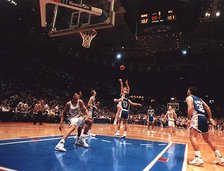













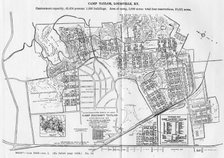
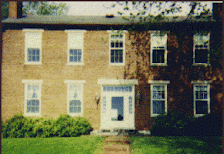

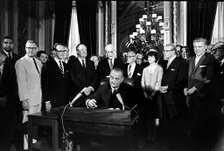

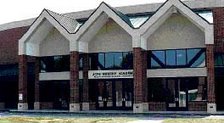
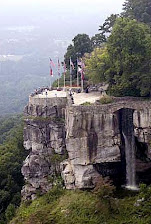

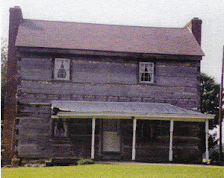
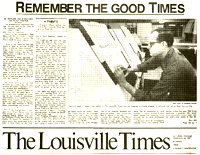
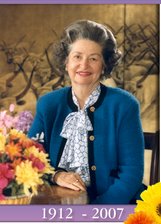
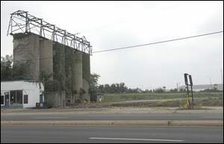
No comments:
Post a Comment